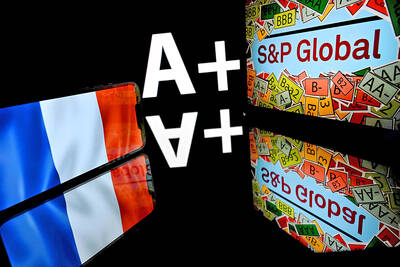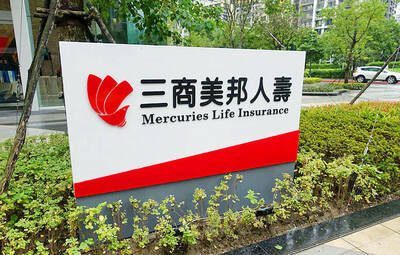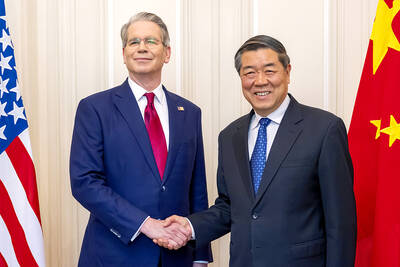Kaohsiung Port -- Taiwan's largest port and once the world's third-busiest in terms of container traffic -- is increasingly losing its transshipment hub status in the Asia-Pacific region amid rising rivalry from ports in neighboring countries, an investigation has found.
The study led by Wu Jung-kui (
The study warned that Kaohsiung Port will see its operations further affected if the government fails to work out effective countermeasures.
Last year, the handling volume at the port dropped for the first time, showing a 2.5 percent shrinkage for a year-on-year reduction, it pointed out.
Although the number of Asia-Europe and Asia-America large container shipping lanes has risen from 44 to 96 over the past 11 years, the report said that Kaohsiung Port dealt with the smallest portion -- 11 percent on average -- of the containers loaded and unloaded among the six ports.
According to the study, Hong Kong dealt with the most at 24 percent, followed by Singapore's 22 percent, Shanghai's 16 percent and Shenzhen's 15 percent.
If its sluggishness continues, Kaohsiung Port is estimated to be handling only 8 percent by 2010, the study forecast, predicting that Shenzhen and Shanghai will replace Hong Kong and Singapore to become the world's largest and second-largest container ports.

France cannot afford to ignore the third credit-rating reduction in less than a year, French Minister of Finance Roland Lescure said. “Three agencies have downgraded us and we can’t ignore this cloud,” he told Franceinfo on Saturday, speaking just hours after S&P lowered his country’s credit rating to “A+” from “AA-” in an unscheduled move. “Fundamentally, it’s an additional cloud to a weather forecast that was already pretty gray. It’s a call for lucidity and responsibility,” he said, adding that this is “a call to be serious.” The credit assessor’s move means France has lost its double-A rating at two of the

AI BOOST: Although Taiwan’s reliance on Chinese rare earth elements is limited, it could face indirect impacts from supply issues and price volatility, an economist said DBS Bank Ltd (星展銀行) has sharply raised its forecast for Taiwan’s economic growth this year to 5.6 percent, citing stronger-than-expected exports and investment linked to artificial intelligence (AI), as it said that the current momentum could peak soon. The acceleration of the global AI race has fueled a surge in Taiwan’s AI-related capital spending and exports of information and communications technology (ICT) products, which have been key drivers of growth this year. “We have revised our GDP forecast for Taiwan upward to 5.6 percent from 4 percent, an upgrade that mainly reflects stronger-than-expected AI-related exports and investment in the third

Mercuries Life Insurance Co (三商美邦人壽) shares surged to a seven-month high this week after local media reported that E.Sun Financial Holding Co (玉山金控) had outbid CTBC Financial Holding Co (中信金控) in the financially strained insurer’s ongoing sale process. Shares of the mid-sized life insurer climbed 5.8 percent this week to NT$6.72, extending a nearly 18 percent rally over the past month, as investors bet on the likelihood of an impending takeover. The final round of bidding closed on Thursday, marking a critical step in the 32-year-old insurer’s search for a buyer after years of struggling to meet capital adequacy requirements. Local media reports

RARE EARTHS: The call between the US Treasury Secretary and his Chinese counterpart came as Washington sought to rally G7 partners in response to China’s export controls China and the US on Saturday agreed to conduct another round of trade negotiations in the coming week, as the world’s two biggest economies seek to avoid another damaging tit-for-tat tariff battle. Beijing last week announced sweeping controls on the critical rare earths industry, prompting US President Donald Trump to threaten 100 percent tariffs on imports from China in retaliation. Trump had also threatened to cancel his expected meeting with Chinese President Xi Jinping (習近平) in South Korea later this month on the sidelines of the APEC summit. In the latest indication of efforts to resolve their dispute, Chinese state media reported that